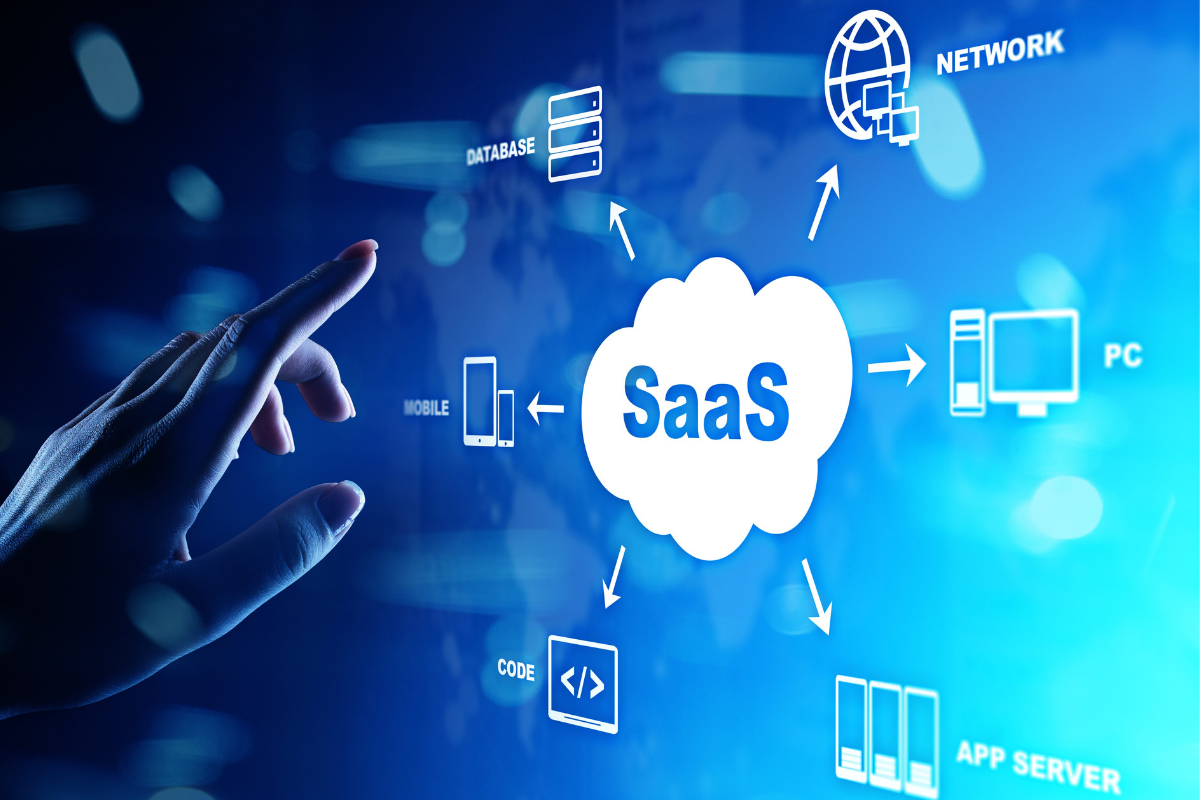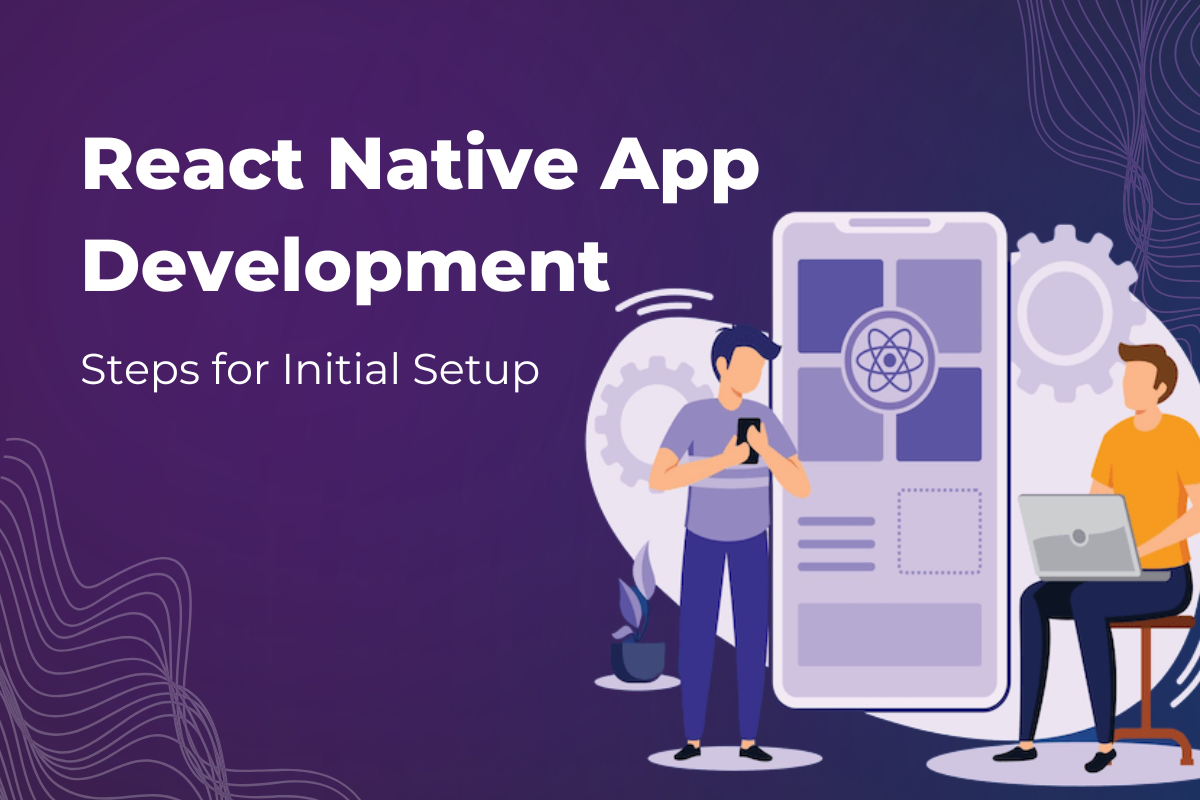The pandemic has hit the global economy, and entrepreneurs are looking for cost-effective and viable solutions to thrive their business goals and lead their market in the future as well. To meet the current dynamics, Software as a Service or SaaS offers the best way for industries to go online and move to the cloud. Whether it is resource management, e-commerce, healthcare, logistics, automotive, or any other industry, COVID-19 has affected every industry vertical globally, and it’s the right time to leverage the benefits of SaaS.
As per a report by Statista, it was observed that in 2020, 36.6 percent of logistics industry professionals reported that in certain regions, they would have to change their business operations in response to the impact of the coronavirus pandemic. Simultaneously, 25.4 percent of respondents felt it was too soon to conclude how their businesses would operate.
For any mobile application development services company or businesses that are remotely accessible and are flexible enough, they have succeeded to easily adapt to these challenging times, while the businesses who are still struggling to provide their workforce access to physical servers and other collaboration tools have realized the dire need to make a rapid switch to cloud-based technology, aka SaaS platform.
Understanding What is SaaS Application Development?
The SaaS Global Market is expected to recover and grow at a CAGR of 10% from 2021 and reach $253 billion in 2023.
Software as a Service (SaaS) is a software solution that is either purchased on a subscription or pay per use basis for utilizing as an application for business purposes, and customers can access this application over the Internet, mainly through a web browser. Pre Covid-19, the SaaS industry had already gained wide traction across wide industry verticals globally, but ever since the pandemic began, businesses rapidly realize the true potential of SaaS applications than ever before.
What are examples of SaaS?
To get a better idea about SaaS solutions, let's take a glance at some examples of SaaS solutions!
- Salesforce.com
- Microsoft Office 365
- Box
- Google Apps
- Amazon Web Services
- Concur
- Zendesk
- DocuSign
- Dropbox
- Slack
SaaS solutions prove to be a success for business growth in terms of functionality, scalability, resilience and ensuring long-term sustainability for businesses. As the pandemic forced companies worldwide to operate on constrained budgets, SaaS applications continued to assist businesses to align their operations to the new normal while improving productivity, minimizing operational costs, mitigating risks, and maximizing flexibility. When it comes to a SaaS company, SaaS companies basically allow enterprises to run apps at nominal upfront cost and improve the overall functionality of the business.
No doubt businesses around the globe are taking smart steps to tackle the situation and bring their business on track once again; still, some businesses are struggling with the traditional business strategies and fail to deliver quality and on-time outputs to their customers like before.

Benefits of investing in SaaS application development services
To illustrate why SaaS-based solutions have grown so popular, we outlined the primary benefits. These references might assist you in better understanding how to develop a SaaS service. Take a look at a few of them.
The setup is very simple and straightforward.
The vendor's cloud environment is used to install and host the software. As a result, the deployment process is faster than with the traditional on-premises technique. You need to find that SaaS application development company that can actually work best for your corporate requirements.
Cost-effectiveness
The on-premises option necessitates a one-time licence purchase. The SaaS approach, on the other hand, demands extremely simple subscriptions.
There are many different factors for defining SaaS recognition, and one of the most distinctive characteristics is the total market size.
Updates are simple and swift.
Customers do not need to purchase and install upgrade packages to get the most recent version of a SaaS product.
Excellent adaptability
Vendors of software-as-a-service provide a number of subscription models that may be adjusted to match the changing needs of every company.
What Makes SaaS more Scalable and Capable during the COVID-19 era?
Currently, SaaS solutions are gaining wide momentum out of all other cloud services that include- Infrastructure as a Service (IaaS), Platform as a Service (PaaS), Application as a Service (aPaaS), Integration Platform as a Service (iPaaS), and Software as a Service (SaaS). SaaS applications are at the top when it comes to improving scalability. It is already saving the IT team to visit the employees and fix the configuration issues while users can leverage fully functional software backed by flexible subscription plans.
Let's dive deeper and explore how SaaS apps have turned out to be a blessing for business during COVID-19 and prove their capability to tackle the challenges perfectly. So, without any further ado, let's get started!
Web Conferencing Leading the Way!

Apps like Zoom gaining popularity and high traffic during the COVID-19 phase are not coincidental; the demand for similar web conferencing solutions has elevated and has become the dire need to continue corporate lives. Leaving the homes and attending meetings outside is life-threatening and switching to web conferencing apps is the safest solution to opt for. Whether it is the office meeting, online classes of students, board meetings, or any other business-related discussion, web conferencing solutions are ideal for ensuring unhampered and smooth communication throughout these tough times.
Moreover, numerous third-party SaaS providers are offering web conferencing solutions to the healthcare consultancy to ensure contactless medical assistants to the patients while ensuring online and better education via apps during these unprecedented times. So, SaaS solutions in software development services ensure the utmost experiences to the users as never before and keep the users safe during this pandemic.
Future of SaaS Solutions: A Blessing for Businesses in the Long Run
Even before the pandemic began, SaaS solutions were highly favored throughout the globe due to its subscription-based economy. Integrating with better security and flexibility with minimized software expenses and time-to-market, the future of SaaS industry has a long way to go enabling businesses with improved business strategies backed by next-gen technologies.
There are countless potential benefits that SaaS solutions accompany for businesses not only during these critical times of COVID-19 but beyond that. Here are a few segments that prove how SaaS solutions are all set to decide the future for businesses and here to stay for quite a long time in the digital landscape.
Evolving subscription-based solutions: Digital subscription solutions offer convenience and cost-cutting benefits that have resulted in the rapid adoption of SaaS-based software solutions.
SaaS model: Since the SaaS model is hosted on the cloud, this minimizes local storage requirements and offers a high degree of on-premise and manual efforts to install and manage applications. Besides that, software management's acquisition cost and responsibility are reduced, backed by secure data backups and recovery.
Minimized software expenses: The vertical scalability in the SaaS model indicates that licenses are expanded or reduced depending on varying business needs in a hassle-free manner. As the majority of the activities are driven from the data center, the customer's ability to launch and scale digital applications is uplifted.
How to build a cloud-based saas application?
Step 1: Choose a programming language to work with.
Despite the fact that SaaS application development appears to be simple, most SaaS application developers are baffled. They are most bewildered by the use of technology and programming languages. You'll require knowledge of Python, Java, .Net/C#, and PHP to create a SaaS application. These are well-known languages that are commonly spoken.
Programming languages handle development challenges, whereas application development frameworks address specific concerns. As a result, for Saas product development, you must be technically skilled and understand your business needs.
Always place a high value on frameworks and languages that can suit your company's needs. Furthermore, create an MVP to handle any development concerns. It's the most efficient way to create a SaaS solution.
Step 2: Choose a password-protected database.
We need a database that is more functional and capable of competing with traditional relational databases. During the development of a SaaS application, each database instance is independent of the other database instances.
As a consequence, you may use this strategy to reduce the database's size rapidly. You, on the other hand. On the other hand, it offers a richer and more engaging programming experience.
For many cloud-based SaaS enterprises in the United States, database selection is crucial.
Step 3: Make advantage of a queueing system.
An asynchronous communication protocol, which eliminates the need for the sender and receiver to communicate at the same time, may be used by any ordinary SaaS application development firm.
SaaS-developed web apps execute at different times and communicate with third-party software asynchronously.
Amazon Web Services (AWS) is used to run the web pages, which aids in the construction of a high-performance cloud-based SaaS solution. Furthermore, setting up EC2, servers, and other resources is straightforward.
Web Storage S3 is also available as a highly scalable storage device. It is simple to use, store, and retrieve, and data extraction is simple as well.
Step 4: Set up a content distribution network
A distributed server's most basic configuration is that it sends content to users from multiple locations to a different location in a high-availability and high-performance environment. This might be useful in the development of SaaS web applications.
Step 5: Incorporate WordPress, SaaS, and Cloud in this step.
Because it offers everything a user needs to enhance SaaS capabilities, WordPress is the best single-site option. Integration with WordPress broadens the scope of SaaS cloud-based apps' roles, plans, capacities, features, and subscription-based pricing structures. WordPress also enhances the security of the application.
What impact will the effects of COVID-19 have on the SaaS industry?

The novel coronavirus has affected the world overnight, and the pandemic adversely hits every industry in the world. No matter which industry vertical you are dealing in, continuous lockdowns and economic downfalls have shattered the world in the blink of an eye. Businesses that already had cloud services rapidly adapted to the new normal while other businesses are still undergoing tough situations.
When it comes to the SaaS industry, things have been different. SaaS holds a direct role in organizational transformation, with the majority of the businesses anticipating accelerated SaaS-led digital transformation for tackling the rapid surge in demand for remote services and higher agility to adapt to swiftly fluctuating market circumstances. The entire SaaS development industry is uprising since the pandemic began and since the digital transformation is happening right now, there is no stop to the SaaS industry proving its true potential in every business vertical across the globe.
During these critical times, the workforce is working from home, giving rapid adoption to SaaS products, including Slack, Zoom, Skype, and other multiple tools, which indicates a better future and clear ways for the SaaS industry in the times to come. The world is experiencing abrupt transformations with SaaS solutions during the COVID-19 era and these smart moves are going to stay in the post-COVID age for the betterment of businesses and users.
Making a smart move to the online world

Since the pandemic continues to keep the people working from home, people are making a switch to online platforms to get their deliverables-from daily essentials, groceries, foods, medicines, and other necessary needs. Moreover, since online shopping and online food delivery services are presently rising, businesses are investing in SaaS platforms like never before.
Users have become smart and so do the businesses have; the world is eventually bidding farewell to offline and traditional approaches and making a rapid move to online approaches for carrying out ordinary to critical tasks in their personal as well as professional lives.
As the world is adapting to the new normal amid this evolving COVID-19 era, every business has realized to stay intact and well prepared in advance for the unexpected times- bringing business operations on track, offering a stable yet remote working environment to the workforce, ensuring utmost quality and on-time delivery to the customers, and tackling evolving business challenges like a PRO! Investing in SaaS platforms is one that can keep businesses ahead of the tough times and gain a competitive edge in the market.
Wish to explore more about SaaS solutions in today's times? Connect with the experts at Seasia to learn how your business can stay ahead during these critical times! We are one of the award-winning software development agencies in the US that have the right skill set and market exposure to guide you with your business journey!
FAQs:
- What is SaaS application development?
SaaS is a comprehensive software solution that you may rent from a cloud service provider on a pay-as-you-go basis. You rent the usage of an app for your company, and your employees access it over the Internet, generally using a web browser. The service provider is in charge of the hardware and software, and with the right service agreement, they will assure the app's availability and security, as well as the protection of your data. With SaaS, your company can rapidly get an app up and operating for a low initial cost.
- Is SaaS a software development?
Yes, it is. Through their unique development and distribution strategy, SaaS-based development focuses on maximizing clients' resources. The platform on which everything is done is where the benefits of SaaS development originate from. Because it is totally cloud-based, everything from development to distribution to maintenance can be done quickly and easily.
- What is SaaS mobile applications?
SaaS refers to hosting your servers on remote devices. It assists businesses in cutting expenses, reducing staff, and scaling up horizontally or vertically.
Mobile SaaS-based apps are also becoming increasingly popular. The SaaS Business Model is steadily being adopted by most firms that seeks to expand their market reach.
This allows them to save money, keep their servers up to date, and not worry about scalability. Some more advantages of these mobile app development services include zero privacy breaches, quick access to global markets, and delivery automation.
- How is the development of SaaS related to cloud computing?
SaaS is a type of cloud computing that allows mobile phones to connect to networks all over the world, allows users to construct local networks that are within range of any Wifi signal, makes software and apps available through the internet. SaaS (Software as a Service) is a type of cloud computing that allows storage servers to be quicker than traditional static hard drives.
- What level of software development is needed to build a SaaS company?
Software as a service, or SaaS, is slowly gaining traction as the preferred model for the companies for all types of software. Salesforce, Dropbox, and Slack are just a few of the well-known firms that provide SaaS services. Every year, more businesses across the world decide to switch to a SaaS business model. And it's not without cause. A high retention rate enables a company to receive income from users and subscribers each billing cycle, as well as organically gain new consumers.
- What is SaaS application architecture and development?
A vendor hosts an application for an organization on a distant server before distributing the app's features to the business's end users through the Internet-that's a SAAs architecture.
The architecture can be used in its current form by a company. Or, in order to satisfy its software demands, its developers can leverage an Application Programming Interface (API) to modify the SaaS with in-house or third-party technologies.
- How to test an enterprise application development or SaaS solutions?
A solid QA plan includes by SaaS solutions are a well-defined scope for elements to be tested, identification of automated testing tools that support the required testing, the level or depth of testing that will be performed for each SaaS component, processes for handling failed automated test cases, methods for managing test cases in general, methods for managing feedback received from the automated testing system, and identification of QA resources to carry out the testing.



